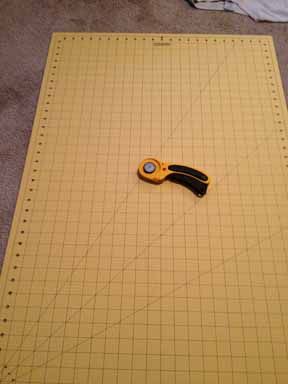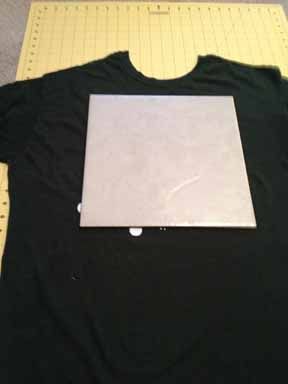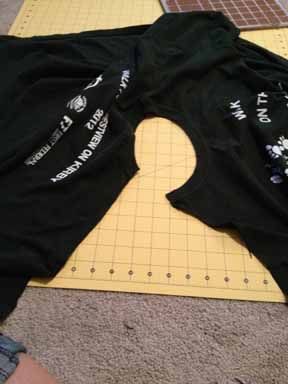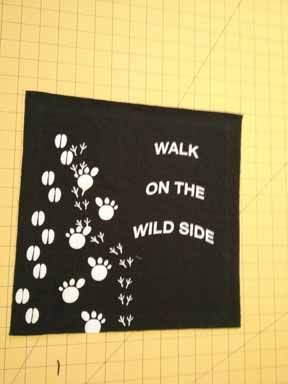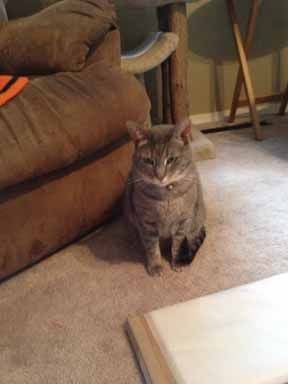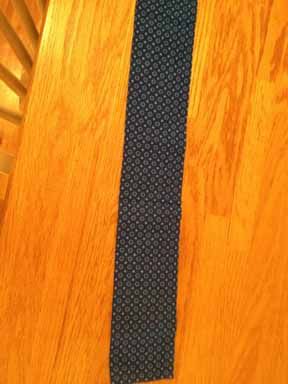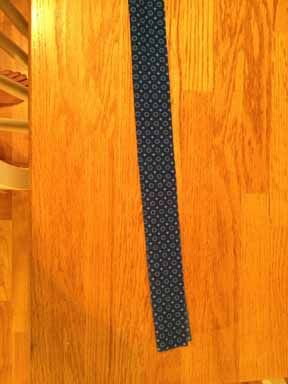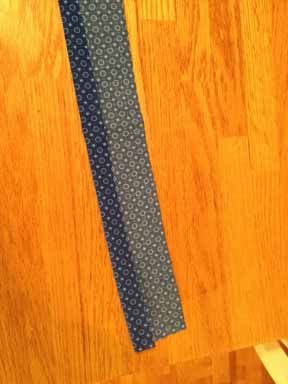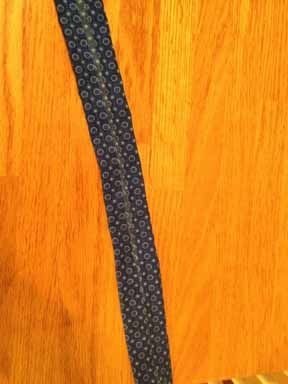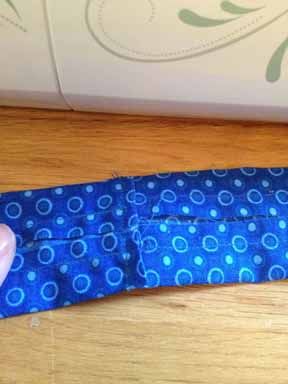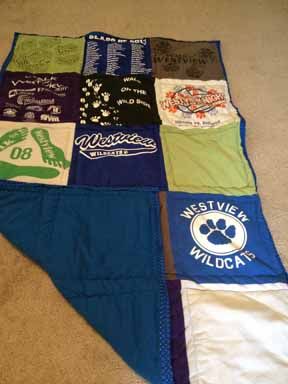First you need to gather up your shirts and figure out how many you have. For my quilt, most of our shirts had stuff front and back so I got two squares out of each shirt and ended up with 15 squares, or 8 shirts, in my quilt. It didn't end up being a regular sized blanket, but it is perfect for the kid that is using it.
The other things you are going to need are batting (I bought twin size at Joann's and didn't use all of it for my quilt), a backing material (I used flannel, 42 inches wide, which was wide enough to cover all my squares without additional sewing and I way over bought on yardage. 2 yards is plenty), binding material (3/4-1 yard of a woven material should be sufficient), and most importantly, interfacing, this is what makes the whole project possible (I used a lightweight fusible interfacing and I got 6 yards of it, which was more than enough) as well as your thread.
General sewing materials, like a mat large enough to lay the whole shirt on, a rotary cutter and guide to make sure your lines are straight will make the project much simpler, as well.
For me, I was far too cheap to buy the standard suggested acrylic ruler, so I used a 12x12 floor tile left over from a previous bathroom remodel. Because it was too thick to cut over, it made my squares just a little bigger than the recommended 12.5x12.5, which was totally fine.
If your shirt is blank on the back, you don't have to cut it apart at all before you cut out your square. You just lay it out, lay your guide centered over your design and cut away. Most of mine had things on the back I wanted to keep so I had to cut it in half.
Basically, I just cut up the side, up the arm, up the shoulder and across the neck and down the other shoulder, so it opened up completely.
Your squares should all be exactly the same size and shape and you will use the same guide to cut your interfacing as well. Interfacing is thin and I folded mine into several layers and cut out a bunch at once, because cutting gets tedious, after awhile.
Once all of your squares are cut out, you will need to iron on your interfacing. Interfacing has a smooth side and a bumpy side. The bumpy side goes against the wrong side of the fabric and you iron the smooth side of until it sticks to the back of the t-shirt squares.
Next, you'll need some space to lay out all of your squares. I did a 3x5 arrangement, because 3 squares wide perfectly fits that flannel I knew I was using. Play with the arrangement until you are happy with how it looks.
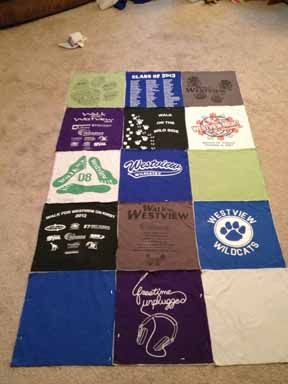
The most important part of this process is make sure you have a dedicated "helper" joining you in your project. How would I ever get anything done without her?
Once you are happy with the layout, you'll fold the left hand square onto the middle square and pin the sides securely, right sides together. Sew the joining seam with a straight stitch. Then lay it back on the floor and pin the right to the middle and repeat. Do the same thing for all the rows, then repeat with the columns that you created from sewing the rows together. After you have all the squares joined, iron your seams open so they lay flat inside your blanket.
Next you are going to create a blanket "sandwich" with all of your layers. Start by laying your backing fabric right side down, followed by your batting and your quilt top, right side up. Pin the edges securely and sew a straight stitch around the outside edge of the quilt. I sewed very close to the edge and then cut next to that line, to make all the layers exactly even.
Next, you'll want to sew around each square to hold the materials in place and make it more decorative. My machine is very basic and only has about 10 stitches, so I just used the coolest one I had, even though none of them are particularly decorative, like they would be on a quilting machine. This is the part that took the longest and was the most tedious. It required a lot of maneuvering, with trying to shove large portions of the blanket through my machine. I also noticed the material wasn't pulling well because it was so thick, so I had to make sure I pushing it through carefully.
Finally, you need to bind it all off, so your not so pretty raw edges don't show. Start by cutting your binding material into 3 inch wide strips.
Then you'll fold those strips in half and finger press a crease in the material.
Reopen the strip and fold the sides into the middle crease. Pin the sides and sew the edges down
After that, you need to seam two binding strips together (which for my 5 rows was a little long, but I just cut off the extra. If you do more rows, you might need more binding strips).
For the short side, one binding strip was just almost long enough, so I just used a small piece that I cut off the long side and seamed that together as well.
Once you have your binding strips long enough, start at the corner and fold the strip over your not so pretty edges and pin the whole length. Once you've got a whole side pinned, sew the binding strip to the quilt. I used a 3/8 seam allowance to make sure I got all the pieces and the seam wasn't too close to the edges. Repeat this around the quilt until you've completed all four sides.
Stand back and admire your lovely quilt!
Here, I flipped over the corner, so you could see the backing material as well.
